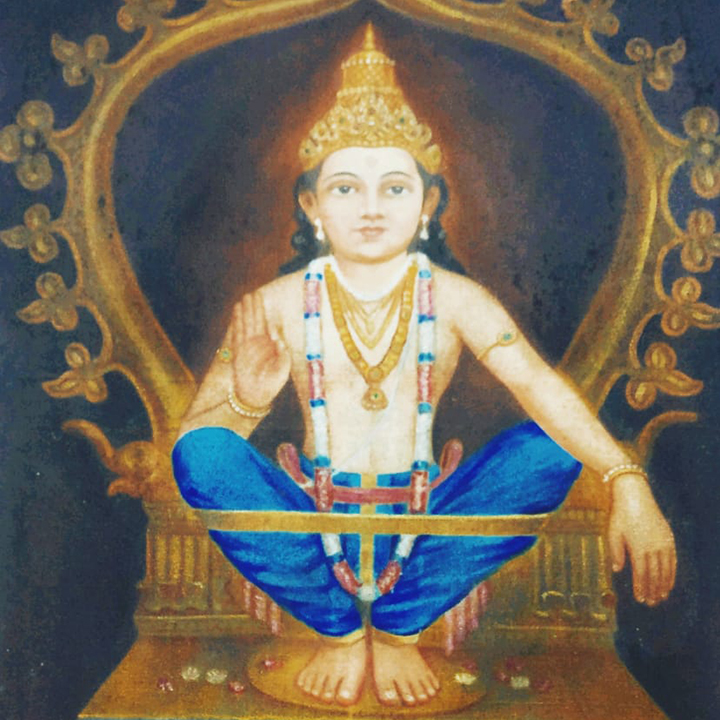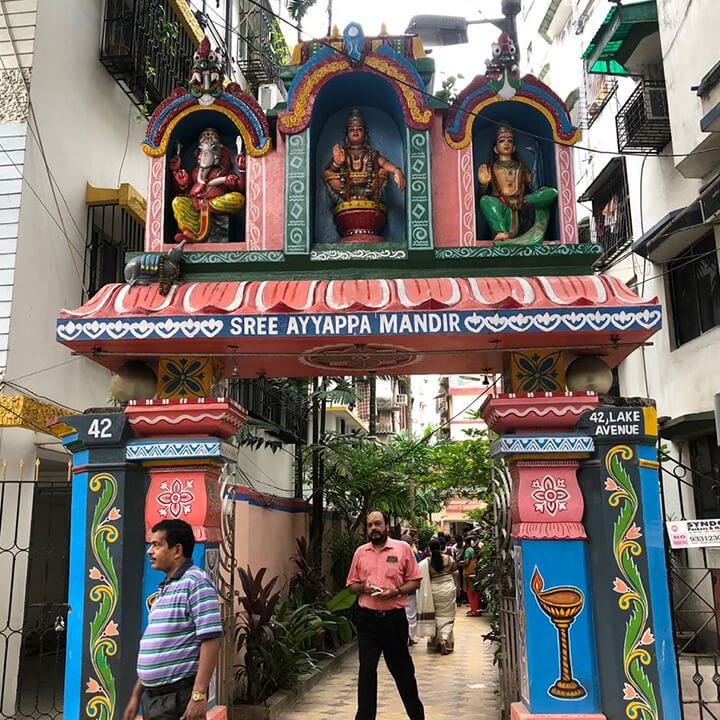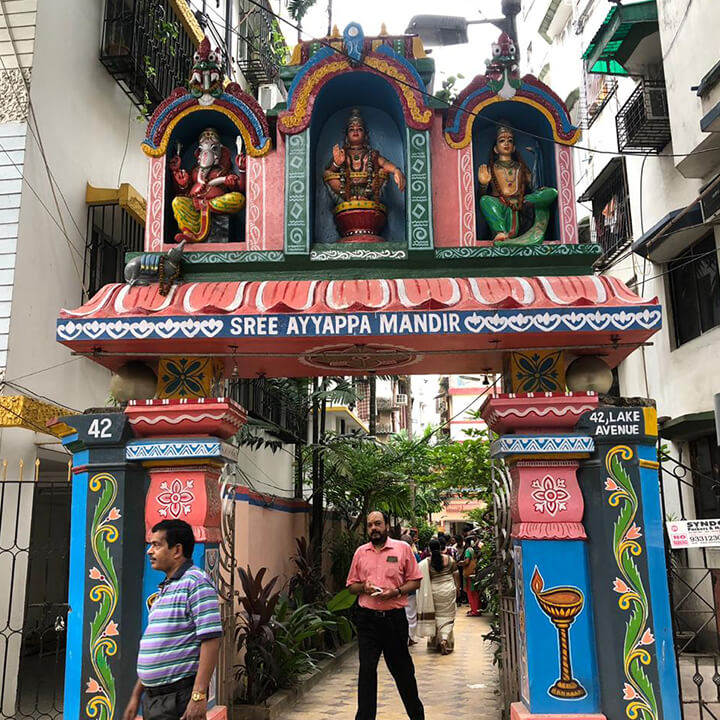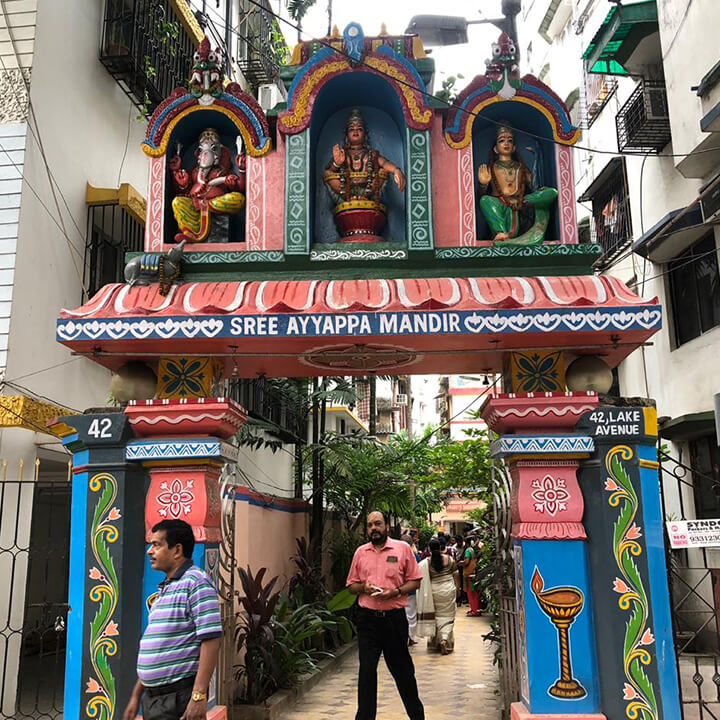Lord Dharma Saastha (Ayyappa)
of Sabari Hills
Aashyaama Komalavishaalatanum Vichitram
Vaasovasaanam Arunotpala Daamahastam
Uttungaratnamakutam Kutilaagrakesam
Shaastaaram Ishtavaradam Sharanam Prapadhye

Hindu shrines are usually situated near river banks, sea shores or mountain top to help pilgrims meditate with a sense of peacefulness. The shrines that are located on hill tops are particularly enthralling, not just because of their religious appeal but also due to their mystic approach.
The mysticism of the mountain shrine of Sabarimala, home to Lord Ayyappa, located on the Western Ghats of India is unmatched in South India. Lord Ayyappa is a symbol of religious unity and communal harmony. Being born to Mohini (the female incarnation of Lord Vishnu) and Lord Shiva, he is also known as Bhuthanatha, Dharmasastha, Hariharaputhran, Ayyanar and Manikanta.
While Sabarimala assumes prime importance in the southern state of Kerala, the other significant temples of Lord Ayyappa along the Western Ghats, celebrating his various incarnations are Kulathupuzha – as a child, Aryyankavu – as a bachelor and Achankovil – as Sree Dharmasastha with Poorna and Pushkala (his wives).

Sabarimala (Mount Sabari - about 3000 feet above sea level) celebrates Lord Ayyappa in the form of yogi meditating for the benefit of all. Pilgrimage to this temple symbolises the journey to heaven. The pilgrims observe severe austerities, wearing rudraksha or tulsi beads strings in the neck and trek the forest to reach the temple. The feeling of delight and spiritual elevation one gets when he has the darshan of the deity is a heavenly experience. The darshan of the Lord and the journey itself is so enthralling that it makes any devotee, undertaking the yatra (pilgrimage) once, to revisit the shrine every year in quest of spiritual solace.
The temple of Sabarimala is open to all males, irrespective of caste, creed, religion, social status or nationality. Since the Lord is a chaste yogi, the entry of females is allowed for to young girls below 10 years of age and women beyond 50 years of age. The pilgrims undergo 41 days of fast to cleanse the mind and soul. The pilgrims during the yatra carry holy ghee filled in coconut for the Lord's Abhisheka in "Irumudi" (two compartment cloth bag) on their heads. The male pilgrims are called 'Ayyappan' and the female pilgrims are called 'Malikappuram'. The shrine is open only during specific periods in a year. It is open from Mid- November to Mid-January and for first five days of every Malayalam month.

The worship of Lord Ayyappa has slowly and steadily begun spreading to other parts of India and through these devotees to other parts of the world. The devotees in Kolkata, charmed by the Ayyappa cult, persuaded themselves to start a place of worship for the Lord and to conduct the main festival Saasthapreethi (propitiating the Lord). This resulted in a framed photo of the Lord being procured and installed in a flat in a bye-lane in South Kolkata.
The genesis of the present Saastha Samooham can be attributed to the initiative of a few devotees more than five decades ago. It all began with a weekly bhajan on Saturdays with ‘prasadam’ being brought by the devotees in turn. The abode soon moved to a slightly bigger place. A very large image of the Lord was drawn in canvas and duly installed as per vedic rituals for daily worship and the important Mandalam celebrations concluding with Saasthapreethi. With the active support of the ever growing number of devotees, it was possible for Samooham to buy a place for itself in its present site at 42, Lake Avenue and the foundation for the building was laid in 1974 by His Holiness Jayendra Saraswathi, the Sage of Kanchi. From such humble beginnings, Saastha Samooham has now grown to become the largest spiritual association of people from South India in Kolkata with member strength of about a thousand.

In course of time it was felt that an idol be installed for performing abhishekam etc. In deference to the wishes of the devotees, idols of the primary deity Ayyappa and Upadevatas Ganesha and Muruga were made in Panchaloha through the artisans in Nabadwip, West Bengal and duly installed in November 1997 as per Siva Aagama system. Since then daily pujas, abhishekams etc are being performed on these idols. Every year during the Mandalam season, kramaparayanam (reciting of particular part of the Vedas) is conducted on all the 41 days, with priests specially trained in this being brought from south India for the purpose. This is followed by Maharudram (a special Yagna to propitiate Lord Shiva) for four days and the Mandalam festival is concluded with a grand Saasthapreethi spanning two days usually on the last Saturday and Sunday of December every year. During this time, the Lord is taken on a chariot from Samooham to the venue and back. Saastha Samooham continues to fulfill the many aspirations of its devotees, who in turn, continue to sustain its many purposeful spiritual and socially uplifting activities passionately and whole-heartedly.